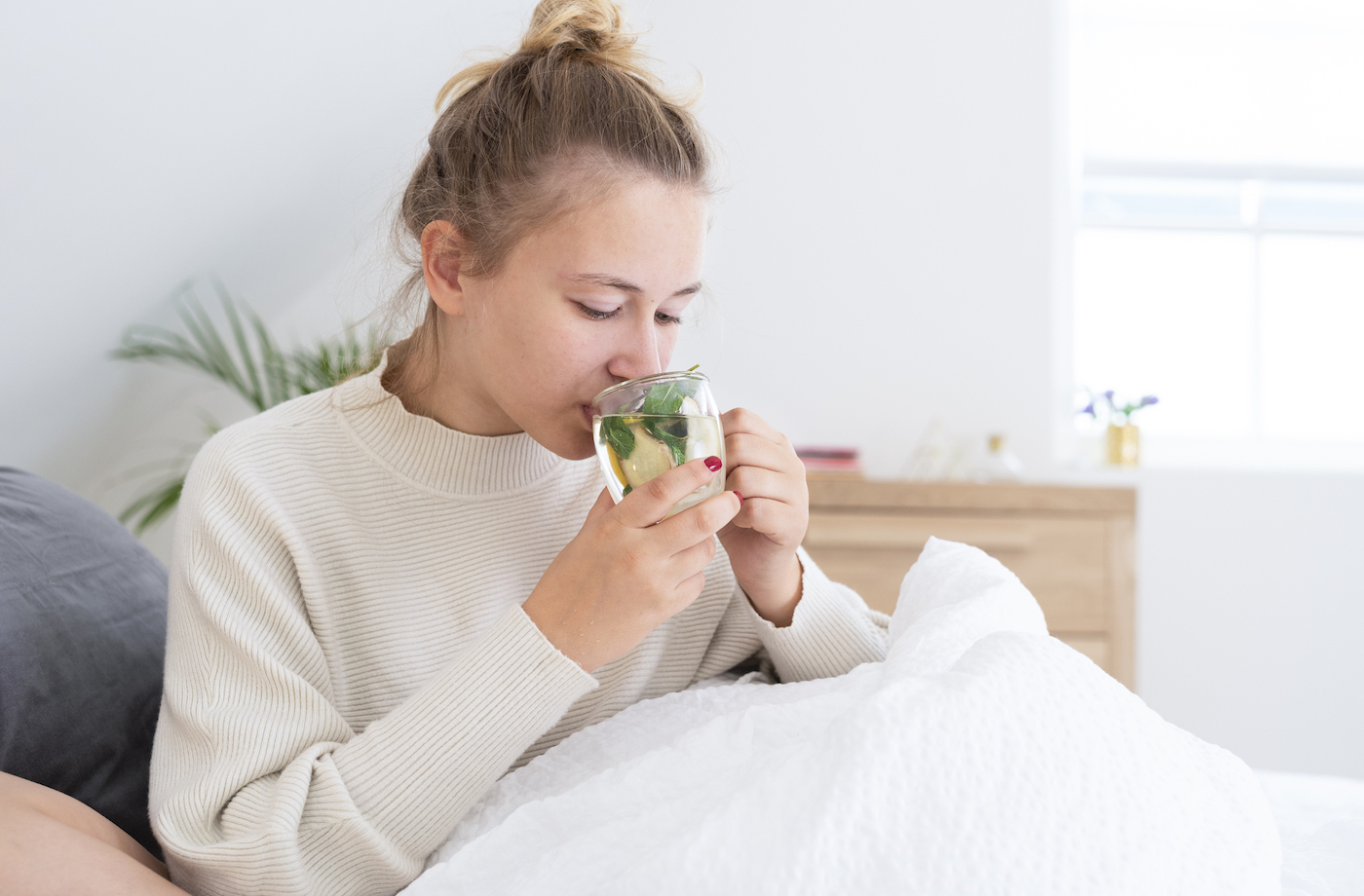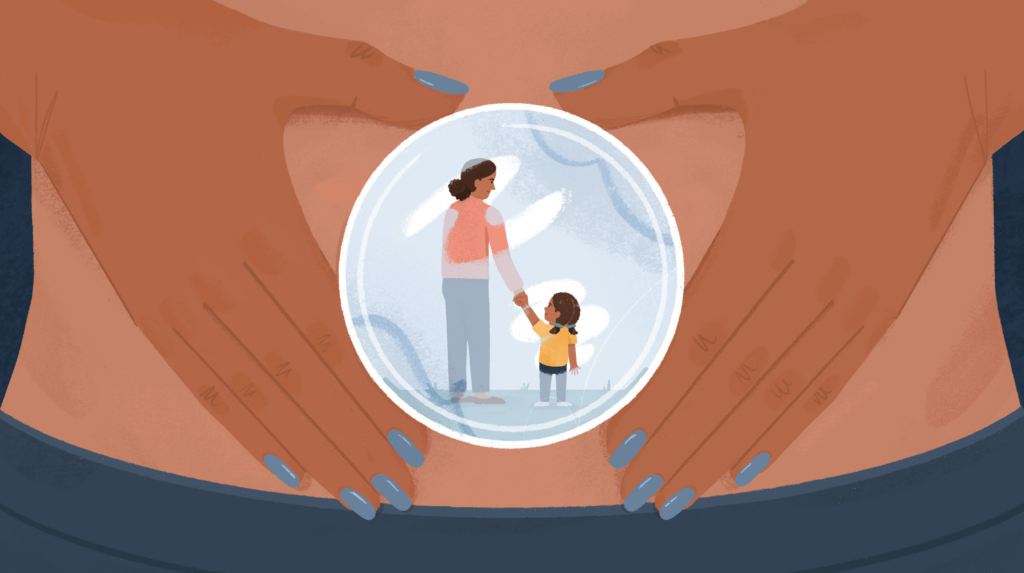
January 18, 2020 at 02:00AM by CWC
Having a stomach bug is never fun. Your whole body hurts, you feel nauseated and dizzy, and it often requires you to spend lots of quality time in your bathroom. (Fun!) And if you do end up getting a GI issue like a stomach sickness or virus, you need to be super careful with what you eat as you recover so you don’t push your stomach too hard and overwhelm it with food. (No matter how good that bowl of mac and cheese looks right now.)
So if all of this sounds a lot like you, you might be interested to know more about the “bland diet,” aka a sad, upset stomach’s life-force during rough times.
What is a bland diet and what do you eat on it?
The “bland diet” is essentially a temporary eating pattern that is low in fiber (yes, you read that right) and seasonings to keep things super plain, non-gas causing, and well, boring, to eat. “It is often used post-surgery for a patient, or when someone is dealing with GI problems, disorders and diseases such as ulcers, Crohn’s disease, GERD (chronic acid reflux), diverticulosis, and even acute GI illnesses,” says Kelly Jones, MS, RD, CSSD, LDN. It can also be helpful if you’re getting over a stomach bug or another similar kind of short-term issue.
ADVERTISEMENT
ADVERTISEMENTKate Spade Autumn/Winter Sale |
This type of diet emphasizes low-fiber starches, lean meats and protein sources, and calming foods, such as soups and hot cereals. It also calls for only cooked vegetables and lower-fiber fruits. On the other hand, “the diet cautions against fatty animal foods, fried foods, acidic foods—such as orange juice or tomato juice—dried fruit, raw vegetables, seeds, whole grain products, and heavily seasoned foods,” says Jones, as these will irritate the stomach.
Generally foods that are okay on a bland diet include:
- Refined pasta
- Bread
- Crackers
- Rice
- Potatoes
- Chicken breast
- Eggs
- Tofu
- Soup
- Oatmeal
Wait—why are so many healthy foods off the menu?
In short, because they can be harder for people with particular gut conditions (or stomach problems) to handle. For example, raw veggies are harder to digest than cooked ones, and things that are high in fiber might not help the situation if you are dealing with a bout of diarrhea, adds Maggie Michalczyk, MS, RD. “Cruciferous veggies often produce gas and are hard to digest, so these are best to avoid too,” she says.
You can have proteins that aren’t fatty, though. “Poultry, eggs, and fish are fine, just not anything that’s highly seasoned,” says Michalczyk. “Dairy is different for people since some people might be okay with yogurt but might not be able to tolerate milk when experiencing stomach issues,” she says. So proceed with caution, depending on the stomach issues you have or what your doctor or dietitian recommends.
Are there any drawbacks to a bland diet?
Quite a few, TBH. “Unfortunately, eating this way limits fiber and many of the nutrients you would obtain from whole grains, seeds, and some nuts,” says Jones. And fiber, obviously, is associated with a plethora of health benefits, from digestive health to lower cholesterol and more stable blood sugar levels.
What’s more, it’s bland! “Seasoning also helps to increase enjoyment and satisfaction from eating experiences, so feeling satisfied from meals and snacks can be difficult while following a bland diet,” Jones says.
Basically, this isn’t a long-term eating plan designed for the average healthy adult. For most people though, this is a temporary diet to help the body adapt back to normal as it recovers from surgery, an acute GI illness, or a flare up from a chronic GI disease.
So…who should even try it?
To that end, this kind of diet is generally only prescribed by a doctor. But there are some specific cases where it might be helpful to try it for a few days when you’re recovering from a stomach virus or another temporary condition. “It can be beneficial in the short-term when let’s say you have food poisoning and need to get some calories in but can really only tolerate crackers and white toast for a couple of days,” says Michalczyk.
If that’s the case, Jones recommends sticking to bland diet foods only until you’ve recovered. She particularly likes BRAT foods—an acronym that stands for bananas, rice, applesauce, and toast—which are the gold standard of bland foods. “They’re all low-residue bland foods that are digested easily so you can maintain blood sugar levels and support hydration while you’re sick and unable to tolerate other foods,” Jones says.
Everyone’s tolerance is a little bit different, so go slowly with the foods you eat during this time. “Maybe that’s a plain piece of toast. Some acidic citrus fruit may be out of the question for some because it could trigger heartburn or acid reflux,” says Michalczyk. She also recommends incorporating a probiotic to help strengthen the good bacteria in your gut post-recovery.
The bland diet can be super helpful when your stomach is having a rough time. But once you’re starting to feel better again (or once your doctor tells you it’s okay), you should go back to your regular eating plan. Because at the end of the day, any plan that has you going without fiber and most other healthy foods isn’t one worth sticking to for the long haul.
Here are the five things a gastroenterologist does every day for better gut health. And these are some surprising signs of poor gut health that can easily be overlooked.
ADVERTISEMENT
ADVERTISEMENTSports Direct Free Delivery on All Orders! |
Author Isadora Baum | Well and Good
Selected by CWC

ADVERTISEMENT
ADVERTISEMENTUp to 30% off Gift Sets |







